Notifications
ALL BUSINESS
COMIDA
DIRECTORIES
ENTERTAINMENT
FINER THINGS
HEALTH
MARKETPLACE
MEMBER's ONLY
MONEY MATTER$
MOTIVATIONAL
NEWS & WEATHER
TECHNOLOGIA
TV NETWORKS
VIDEOS
VOTE USA 2026/2028
INVESTOR RELATIONS
COMING 2026 / 2027
ALL BUSINESS
COMIDA
DIRECTORIES
ENTERTAINMENT
FINER THINGS
HEALTH
MARKETPLACE
MEMBER's ONLY
MONEY MATTER$
MOTIVATIONAL
NEWS & WEATHER
TECHNOLOGIA
TV NETWORKS
VIDEOS
VOTE USA 2026/2028
INVESTOR RELATIONS
COMING 2026 / 2027
About Me
 Latinos Media
Latinos Media Latinos Media provides all types of news feeds on a daily basis to our Members
Posted by - Latinos Media -
on - May 12, 2023 -
Filed in - Salud -
-
823 Views - 0 Comments - 0 Likes - 0 Reviews
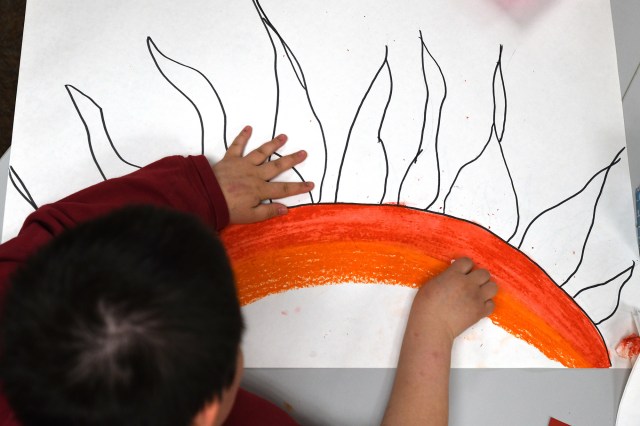
GRAND JUNCTION, Colo. — At first glance, nothing seems particularly unusual about the four-room school in this western Colorado city. Inside, six students are learning about radioactivity. The walls of their classroom are plastered with motivational messages like “Determination” and “Courage” scribbled onto paper cutouts of stars and moons.
A closer look reveals that Hilltop Day Treatment is no ordinary school. There are no backpacks or lockers. Students are escorted to the restroom. Hugs aren’t allowed, a precaution against inappropriate touching by students who do not yet understand physical boundaries. And before lunch, the students break from their regular lessons for group therapy.
Hilltop is a facility school, Colorado’s term for specialized institutions that serve students with severe behavioral, mental health, or special education needs when their public schools can’t. And this school, with 12 students, is the last of its kind on the Western Slope, the vast territory west of the Continental Divide home to 10% of the state’s population. The other 29 facility schools are in the more heavily populated Front Range corridor.
“It breaks our heart to have a waitlist,” said Hollie VanRoosendaal, director of community programs at Hilltop Community Resources, the organization that runs the Hilltop Day Treatment school. “We really want to get those kids in and seen and getting their education towards their graduation as well as some really great therapeutic services.”
Disability rights and mental health advocates say facility schools are overused and can become dumping grounds for students with disabilities. But in rural Colorado, when the local school district can’t meet a student’s needs, the lack of spots in facility schools can mean students end up at home learning online, languishing in mental health facilities, or attending a residential school far from home.
Democratic Gov. Jared Polis signed a bill into law this spring that provides funds to prop up facility schools and strengthen services for students with severe needs in rural districts. But the sparse population and vast distances of the Western Slope and eastern plains mean serving these vulnerable students will likely remain a challenge.
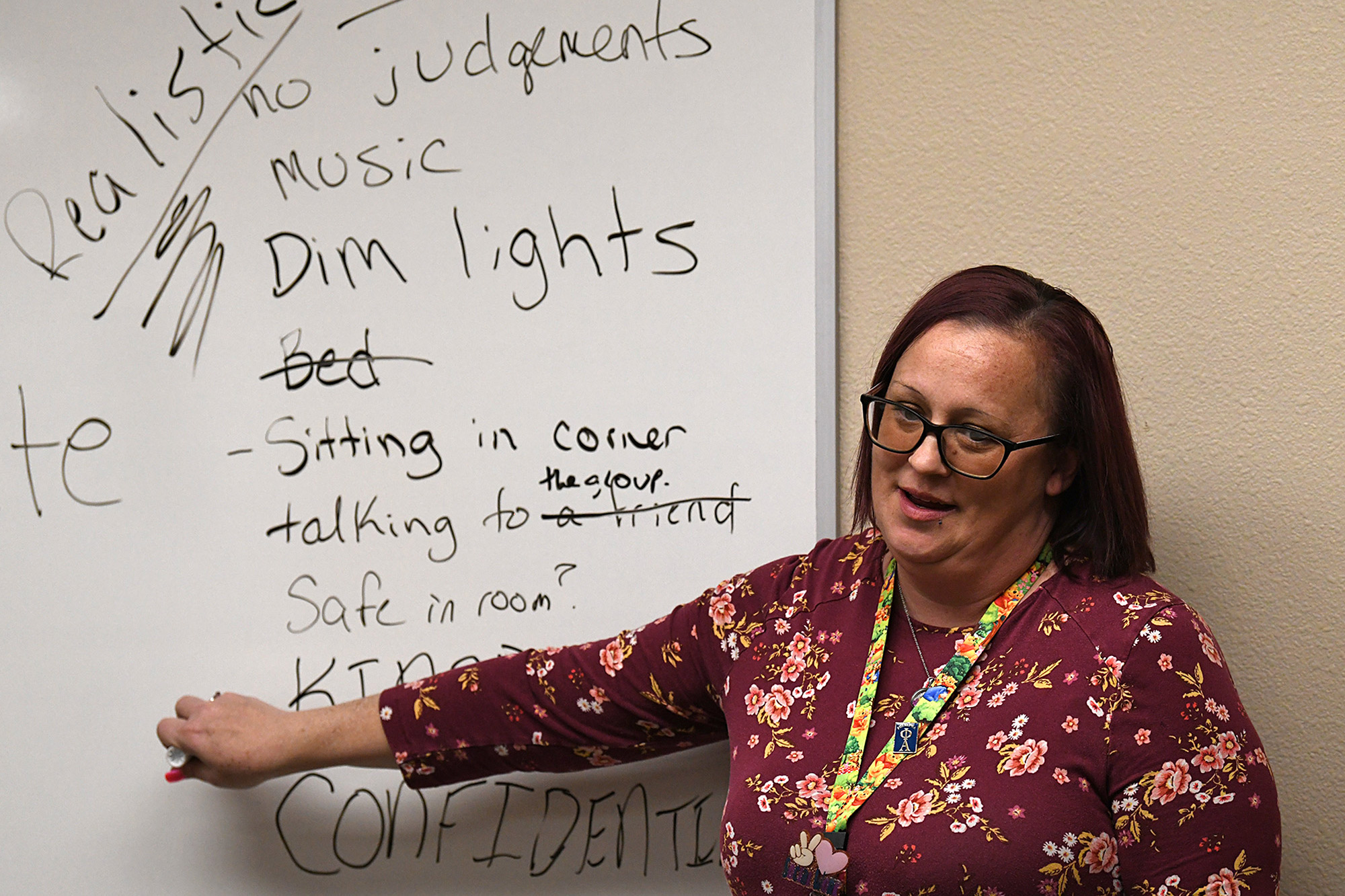
“There are no services there. And so you get one student with autism that comes into this little tiny district, what’s going to happen? That child is not going to get what he or she needs, and they’re too far away from the Front Range,” said Barb Taylor, an educator turned consultant who serves as special education director for several Colorado facility schools.
According to a report submitted to lawmakers, among the main reasons students could not be placed at a facility school were lack of openings and, in rural areas, “prohibitive geographic location.”
A few rural patches of the state have figured out alternatives to serve students closer to home. For example, the Santa Fe Trail Board of Cooperative Educational Services, or BOCES, started the Southeast Alternative Learning Academy in La Junta for students in the eastern plains with emotional and behavioral problems.
But few other BOCES, regional associations of school districts that pool resources to provide services they would not be able to alone, have managed to start such programs.
Instead, across much of rural Colorado, “we have people that are trying to work with these kids that are not qualified or that are not trained, that don’t have the skills that they need to be able to do that in the district,” said Sandy Malouff, executive director and special education director of the Santa Fe Trail BOCES.
In the western half of the state, Sonjia Hunt, director of Hilltop Day Treatment school, said she has watched facility schools scale down or close: first in Rifle, then in Whitewater, Delta, Durango, and, last year, one inside a Glenwood Springs hospital.
After operating in the red for years, Hilltop had to scale back as well, shutting down its 16-bed residential facility in October 2020. Now, students on the Western Slope who require residential treatment must travel across the Rockies, if not out of state, Hunt said.
The new state law will allow Hilltop to hire another teacher, case manager, and therapist, and take on 12 more students, Hunt said. But Hilltop doesn’t plan to reopen its residential side.
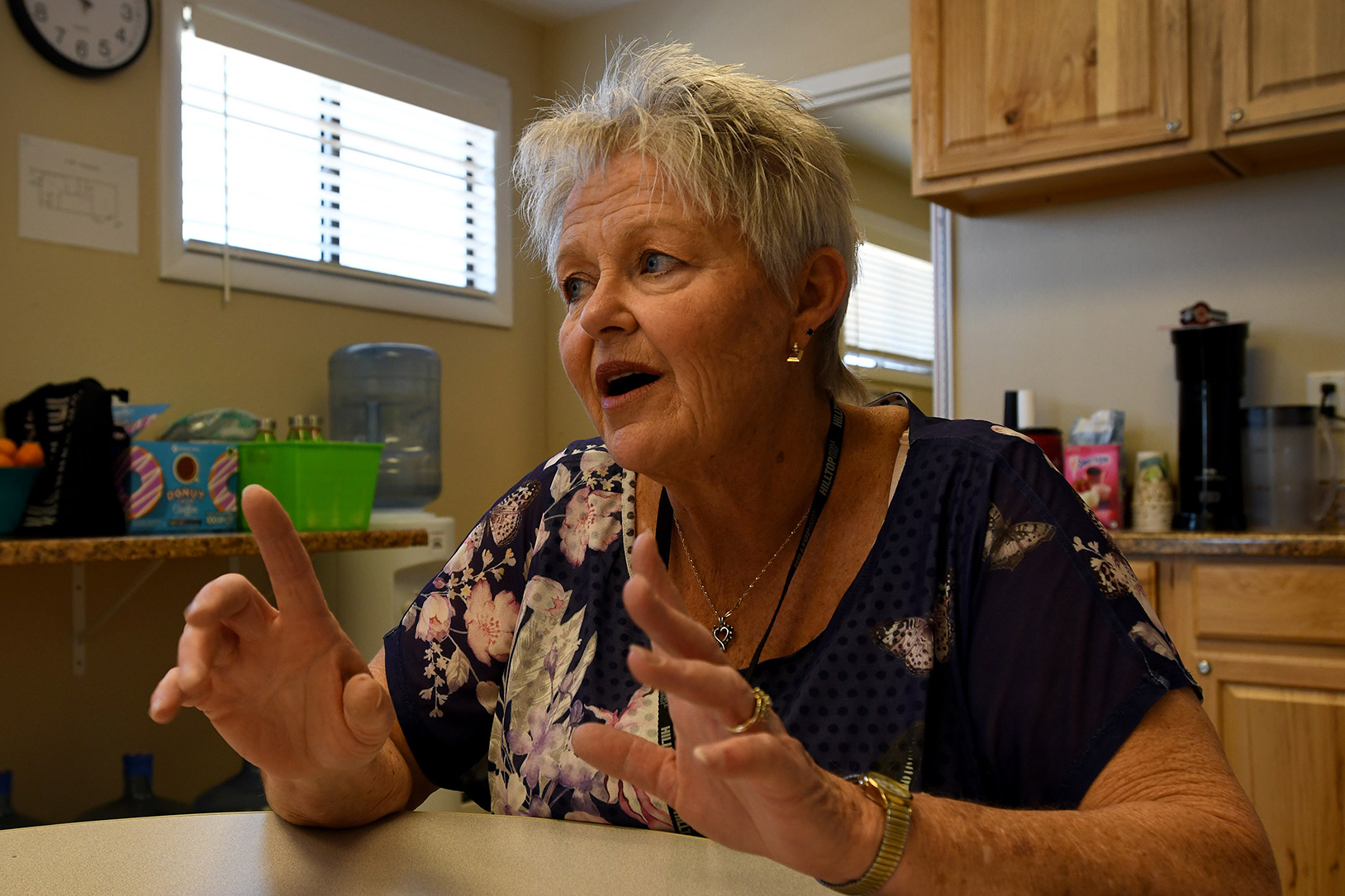
When the residential facility closed, surrounding communities struggled to make up the loss, said Tammy Johnson, executive director of the Uncompahgre BOCES, which serves five rural western districts.
“There’s a big difference between being an educational entity and a therapeutic entity. We just don’t have the training that we need to meet these kids’ needs,” said Johnson.
‘I Just Needed Help’
Riley George, a 12-year-old with autism and disruptive mood dysregulation disorder, has had to cross a mountain range to get an education. After enrolling in and leaving multiple schools, Riley now lives in a residential facility in Colorado Springs, more than three hours from his home in Del Norte.
The slight preteen, whose tufty hair sticks up in the wind like a thistle, is an avid reader who tears through 400-page science fiction books. He loves his dog and Baby Yoda, a character from the Star Wars TV series The Mandalorian. He goes for walks with one of his little sisters and plays action figures with his little brother. On a good day, said his mother, Kelly George, he’s “a good, respectful kid” who has no trouble getting himself ready for school.
But Riley’s brain works faster than his hands, which can make tasks like writing or tying shoelaces feel frustratingly insurmountable. He is only now learning how to play make-believe with others cooperatively, something other children tend to learn at a much younger age. And seemingly small things, like an itchy tag on his clothes, or loud noises, like his sister’s happy shrieks, can send him to a bad place.
“When he was younger, he would cover his ears and just immediately hit the floor and start screaming like he was in pain,” said George.
Now that he’s older, overload leads to aggression: hitting, cursing, kicking. “We had to design a code word for the other kids,” said George, to signal to her three younger children to barricade themselves in a room while the parents try to calm the eldest.
From preschool through second grade, Riley attended Bill Metz Elementary School in Monte Vista, one town over from where his family lives. Riley remembered how his teachers there gave him space when he was upset, as on the day his dog ran away. His special education teacher, Kellyn Ross, remembered him complimenting the cafeteria staff for a “divine” lunch.
Riley was in the Pokémon Club and could earn points for good behavior that he could redeem for prizes. Riley and Ross developed a system to help him identify his feelings and others’, and to take a break when needed.
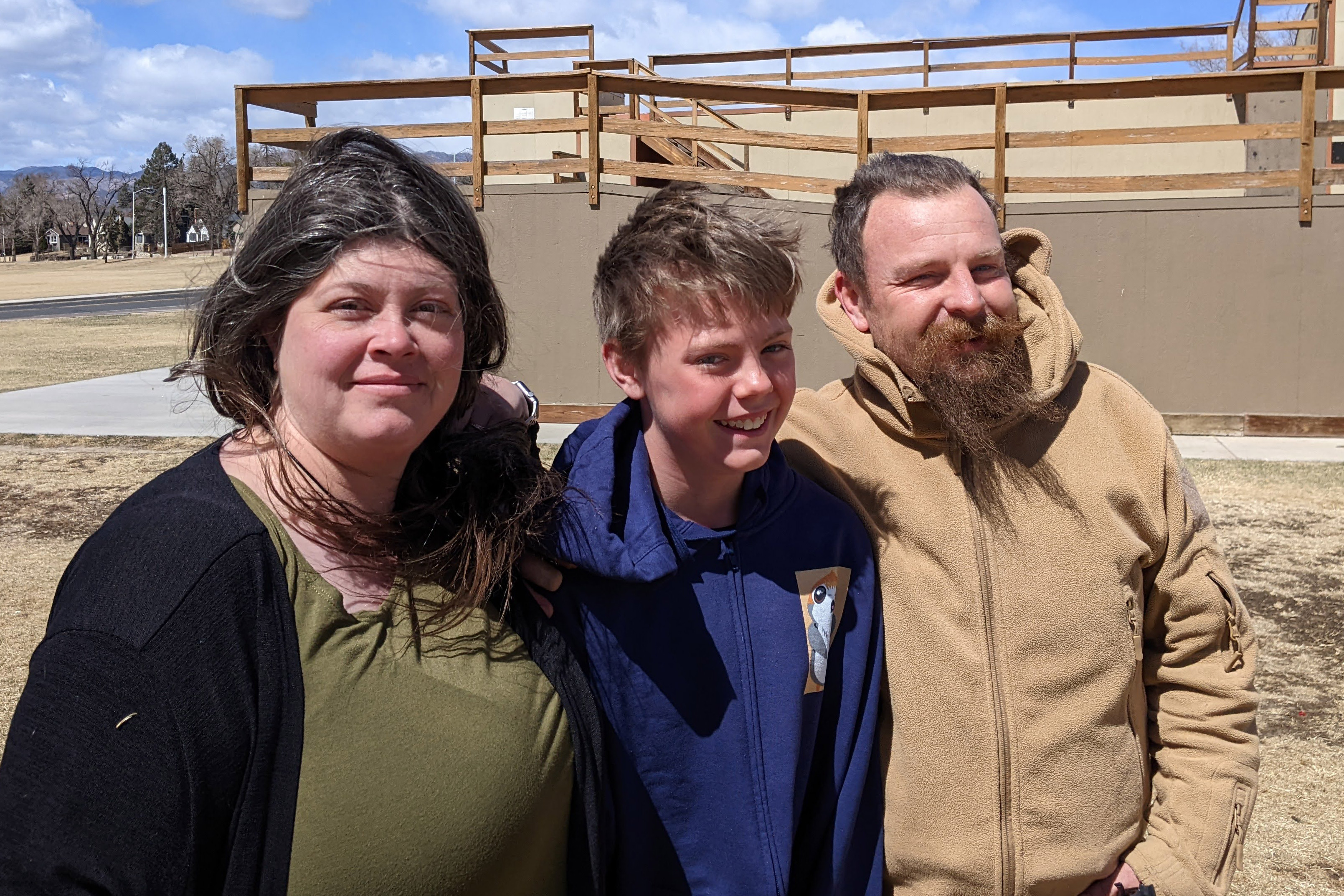
Monte Vista School District Superintendent Scott Wiedeman said the school takes a proactive approach to encouraging positive behavior in all students.
But when Ross got a promotion, the school couldn’t find someone with enough experience to fill her spot, and they were at capacity with special education students. In the decade since Ross had started as a special education teacher, her caseload had doubled. So, they had to send out-of-district students, including Riley, back to their neighborhood schools.
“The kicker is just having the resources,” Wiedeman said. “We need more people to deal with the mental health of students. That’s a big factor.”
After that, Riley started lashing out at others. The calls home ratcheted up, as did the use of force at school to restrain him.
When Riley was in third grade at Del Norte Elementary, he was on an individualized education program for serious emotional disability. Despite that, school officials frequently suspended him and whittled his classroom time down to one hour a day, the Georges said. When school districts in Oregon shortened their special education students’ school days due to behavior, experts determined it was as counterproductive as limiting reading time for students who are struggling to read well.
Aaron Horrocks, superintendent of the Upper Rio Grande School District, declined to comment on Riley specifically but said challenging behaviors are on the rise and schools need more support services and options — funding to hire paraprofessionals or a day treatment center within driving range.
One day, Riley slapped the side of the school bus and cursed, his mother said, and school staffers held him on the ground for an hour — Riley said one sat on him. The Georges filed a civil rights complaint with the U.S. Department of Education that alleged school officials had discriminated against Riley because of his disability. The department acknowledged that IEP documents show Riley was physically restrained three times over the course of a month.
Before an investigation got underway, the school district settled the complaint by adopting new protocols and training staff members on shortened school days and physical restraints. The Georges eventually chose to take Riley out of that school and enroll him in an online school.
That worked for about a year, with his father, Matthew George, staying home to help with schooling while Kelly George became the sole breadwinner.
But when Riley gave his mother a bruise the size of two softballs — and threatened to kill her while she slept — they were stuck: He had to go somewhere that could meet his needs, for his family’s safety. They contacted several residential facilities and even a few hospitals but ran into a string of denials: Some didn’t accept his insurance; others rejected him because he wasn’t yet a teenager, because of his aggressive behavior or his autism, or because they just had no beds left.
Schools in Utah, Arkansas, and Texas didn’t respond, and there was no room in Wyoming. By that point, Hilltop had closed its residential program, and driving more than four hours each way for a day program was out of the question.
In the meantime, Riley was in and out of short-term treatment facilities on multiple emergency mental health holds between September and January. Under Colorado law, emergency holds allow people to be kept for 72 hours for treatment and evaluation if they appear to be an imminent danger to themselves or others.
When Kelly George called her county’s social services department, she said, the response was that “unless he basically puts me in the hospital or is really aggressive towards one of his siblings and actually hurts them, there was nothing they could do, because it’s not an abuse or neglect case.”
So, they pressed assault charges against their own child.
“I just needed help, and it was the last card I could play,” said Kelly George.
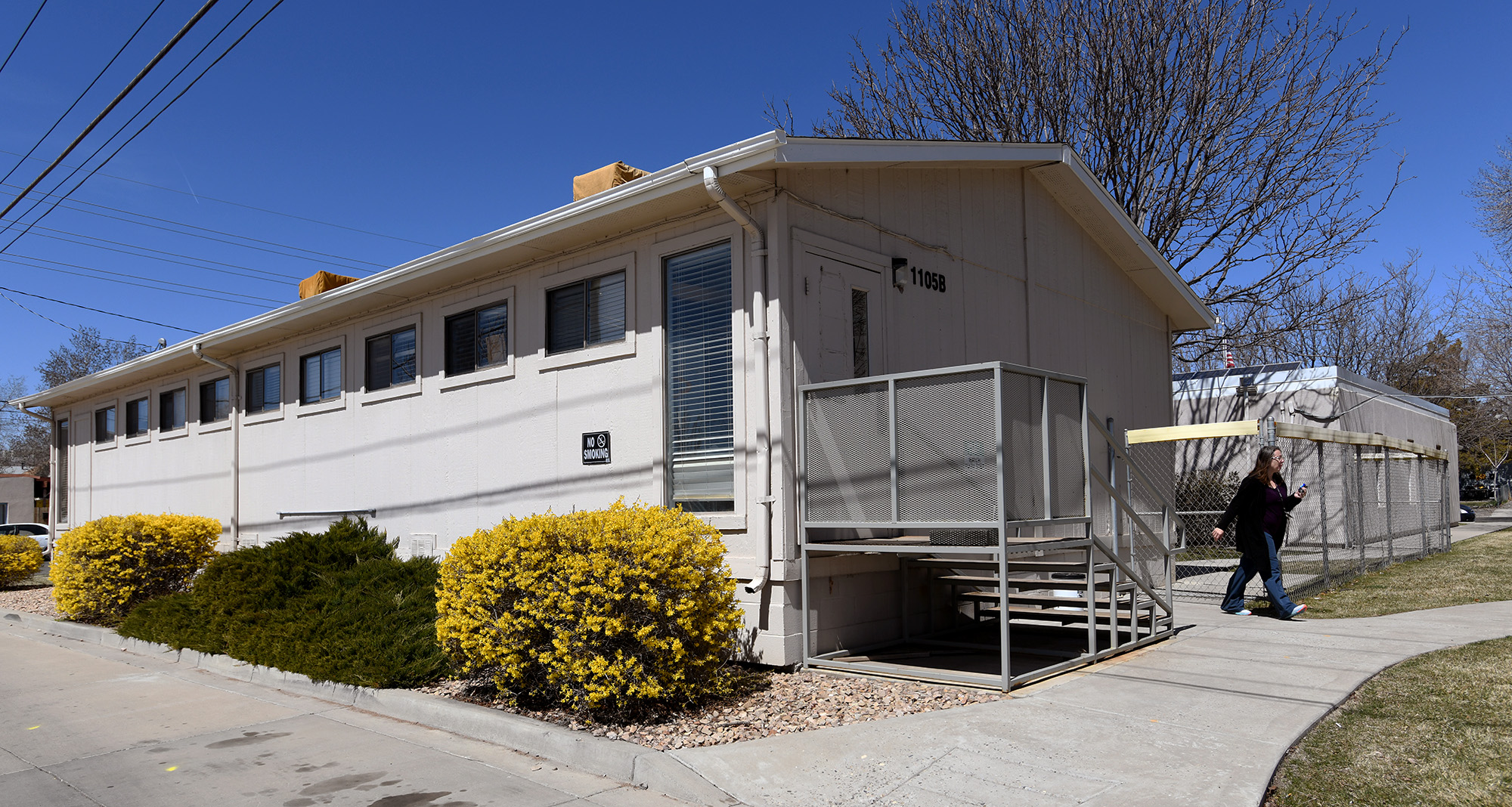
Breaking the Cycle of Anger
Critics of facility schools condemn their segregated nature, but Riley wound up in even more segregated places over the next four months while his family tried to secure a bed at a residential school. After being criminally charged, Riley first went to Pueblo Youth Services Center, a detention facility. That was followed by a stint in a mental health hospital. His belongings moved with him in a garbage bag — the “essentials,” said Riley, plus 10 books about the military sci-fi franchise Halo.
Then, in late March, the Georges drove him to a Colorado Springs facility school called the J. Wilkins Opportunity School.
“I want to learn to control my anger better,” Riley said on his first day there. He missed his dog. He said he’d be ready to go home when anger no longer feels like “clenched fists.”
The Georges wish there were a place closer to home. “We can’t be the only family in our 200 square miles dealing with this,” said Kelly. A dream scenario, she said, would be to have a school that kids like her son could attend, with transportation to and from school, and therapeutic support at home.
Some provisions in the new Colorado law are intended specifically to help rural areas, such as establishing a statewide technical assistance center to help meet rural students’ needs.
It could provide anything from in-person training for school staffers to a behavior analyst available to coach people over the phone in a pinch, said Malouff, the Santa Fe Trail BOCES executive director, who participated in a stakeholder group that came up with the idea. The details have not yet been determined.
Malouff hopes the center will help rural districts gain the skills they need to keep students at home, and free up facility school spots for others with more severe needs.
Michelle Murphy, executive director of the Colorado Rural Schools Alliance, and others in rural education are skeptical that a single statewide technical assistance center can provide the support districts need when so much of the need is for boots on the ground.
“We have workforce challenges in virtually every aspect of our special education programs, from teachers to our special service providers to our paraprofessionals,” said Murphy. “It’s close to, if not an actual, crisis at this point.”
Pat Bershinsky, executive director of the Pikes Peak BOCES in Colorado Springs, said rural needs would be more effectively met if the money instead went directly to BOCES to create their own programs.
The Georges would have kept Riley at or close to home had they been able to get the right training, services, and support. In states like Minnesota, for example, it’s possible to get personal care assistance at home under certain circumstances, including for help with frequent aggressive behaviors for a home-schooled student with an individualized education program.
Such services were created to keep people in their communities and avoid institutional placement. Colorado does not appear to offer such services specifically geared toward aggressive behavior.
On move-in day in Colorado Springs, the Georges toured the campus with Riley and carried his belongings into his new room. Matthew George excitedly pointed out that Riley will be living mere blocks from a U.S. Olympic & Paralympic Training Center.
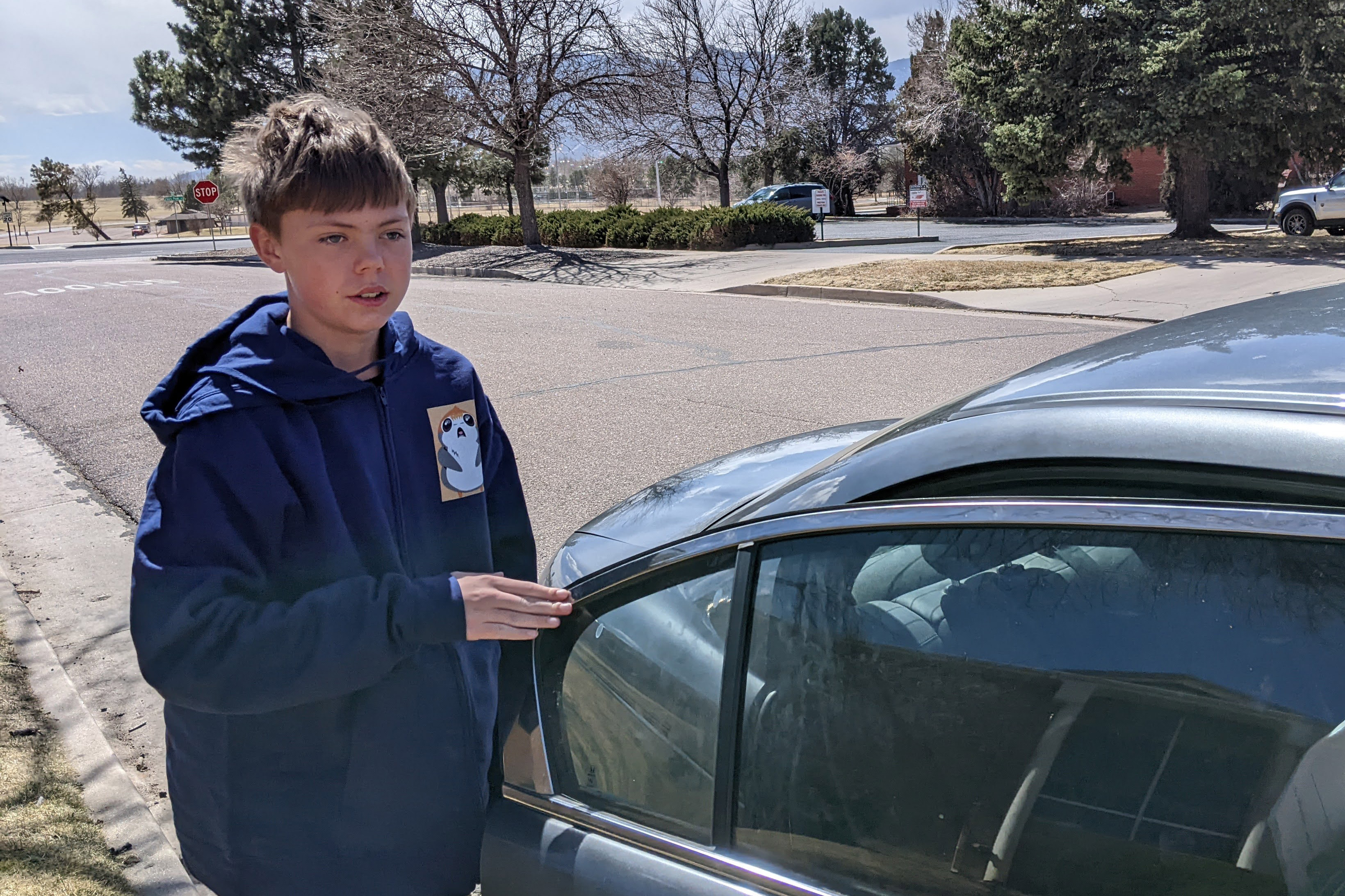
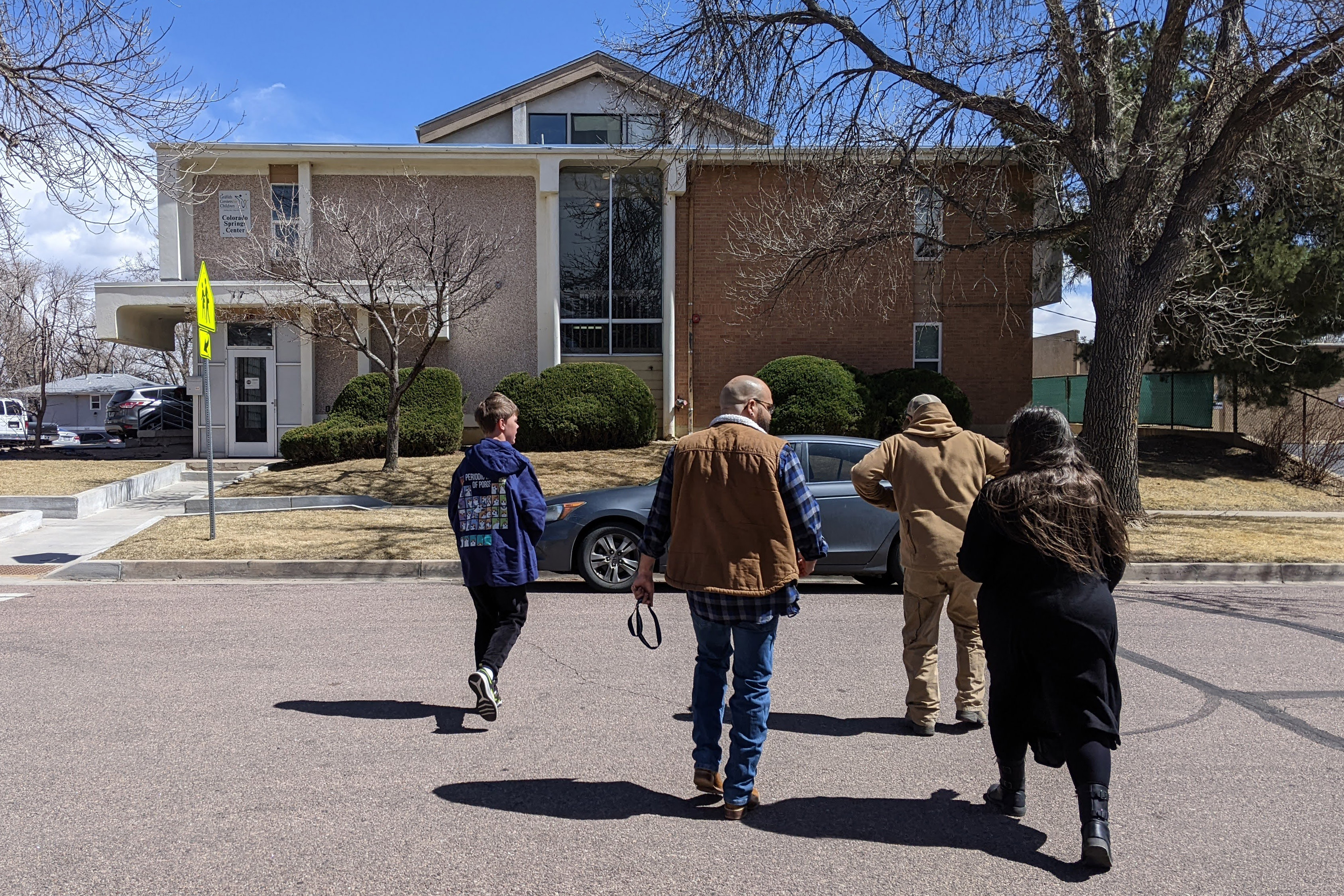
“I can’t believe that, finally, after all this time — eight months — it’s finally happening and my family’s needs are finally, finally being met,” said Matthew George. But he was also apprehensive. He, too, was institutionalized as a child, bouncing for five years between foster care and the same mental health hospital and facility school organization as his son.
“I never thought I would be in a position where I would be an adult and witness my son going through the same things that I went through,” he said. “Something really needs to be done, because I don’t want to be going and visiting my grandkids in a facility like this.”
Riley’s move has the Georges’ other children worried, too. Kelly George recalled their 5-year-old daughter throwing a temper tantrum over ice cream, then wailing in fright: “I’m gonna get sent away! I don’t wanna get sent away.” But Kelly, too, is optimistic about Riley’s new chapter.
“It’s sad that we’re leaving him here, but at the same time I’m really hopeful that this is going to be what he needs to get him to where he can be OK and be at home with us,” she said.
When it was time to say goodbye, Matthew George hugged his son close. “You can do this,” he told him. And then the family drove away, back through the mountains, back home.
Chalkbeat Colorado senior reporter Melanie Asmar contributed to this report.
about last resort“Last Resort” is a Colorado News Collaborative-led four-part investigation by Chalkbeat Colorado, The Colorado Sun, and KFF Health News into the collapsing system of schools that serve some of Colorado’s most vulnerable students.
The state is now scrambling to shore up what are known as facility schools, which each year enroll thousands of students with intense mental and behavioral health needs.
The complete series can be found here.
Part 1: The schools that take Colorado’s “most vulnerable” students are disappearing.
Part 2: Students in rural Colorado are left without options as specialized schools close.
Part 3: Colorado is now pouring more money into facility schools, but are they helping?
Part 4: How Colorado is filling gaps as last-resort schools dwindle.
KFF Health News is a national newsroom that produces in-depth journalism about health issues and is one of the core operating programs at KFF—an independent source of health policy research, polling, and journalism. Learn more about KFF.
USE OUR CONTENTThis story can be republished for free (details).